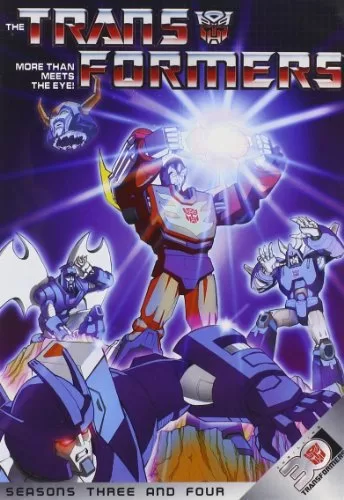
“Baptism of Fire”: A Retrospective of Claremont’s X-Men, Part 1

Although the X-Men are a concept that dates all the way back to 1963, the Silver Age isn“t where most fans traditionally think of when it comes to the team. In this way, they“re distinctive””the X-Men were a classic Lee/Kirby creation, but Lee and Kirby aren“t immediately identified with the X-Men as they are with the Fantastic Four, Thor, or the Avengers. They did create some of the core X-Men characters (like Cyclops, Jean Grey, and Magneto), and many of the basic elements, but those contributions are overshadowed by the greatness that came later in the series. They“re particularly overshadowed by the efforts of one writer over the course of a legendary seventeen-year run””Chris Claremont.
Around the time that Claremont became involved with the X-Men, it was a book that was hovering on the edge of cancellation. The impetus for what became the “All New, All Different X-Men”“ didn“t even come from Claremont, at that time an editorial assistant at Marvel. That began with his predecessor, Len Wein, and artist Dave Cockrum, both of whom were instrumental in designing the new characters who would join the team. Along the way, it was decided that most of the original X-Men would depart, to be replaced by a group of largely new characters, with more of an international flavor. This team would include:
- Cyclops: The sole original X-Man to remain, and who would serve as team leader for several years after this.
- Banshee: An Irish interpol agent with a powerful sonic scream; he was the only other recognizable Silver Age X-Men character in the starting lineup.
- Wolverine: The best there is at what he does. At this time, he“d only appeared as a Hulk opponent in a previous Len Wein story.
 Nightcrawler: A German teleporting acrobat with a smile and an elfish appearance. He was originally designed by Cockrum as a Legion of Super-Heroes character before using him for X-Men.
Nightcrawler: A German teleporting acrobat with a smile and an elfish appearance. He was originally designed by Cockrum as a Legion of Super-Heroes character before using him for X-Men.- Storm: A Kenyan goddess with power over the weather, and who would become a key figure of the Claremont era. She was a composite of several unused design elements for Cockrum“s Legion project.
- Colossus: A member of a Russian farming collective (in that time what was the Soviet Union) with the power to transform into organic steel.
- Thunderbird: A Native American soldier who became the new team“s first casualty.
- Sunfire: The preeminent hero of Japan with the power to fly and project flame. Sunfire only lasted for an issue, but he would make the occasional appearance during the Claremont era.
Though most of these characters are mainstays by today“s standards, at that time, this was a very risky move for Marvel. They removed several established characters, including most of the original X-Men, as well as Havok and Polaris (who were fixtures of the Roy Thomas/Neal Adams era). Later into his run, Claremont would make Jean Grey a prominent character until her apparent death. However, he“d also throw the occasional bone for classic fans, weaving in most of the older characters in and out of his storylines as there was room for them. The only classic X-character who was largely neglected in those seventeen years was Iceman, who gravitated to other teams like the Defenders during that time. Eventually, all of them would return to the fold, especially by the time X-Factor was created, and even into the “Mutant Genesis” era when Claremont left.
 The other important point about the “All New, All Different”“ team was that they were truly an international group. Aside from Xavier, Cyclops, and Jean, this group of X-Men was far more diverse and far more representative of the world at that time. Though there were only two major female characters at that time (a void that Claremont would spend seventeen years filling), Storm, Thunderbird, and Sunfire made the X-Men a unique team compared to others in the mid-70“s. (Though Sunfire“s early exit from the team and Thunderbird“s death in the following story arc negates that accomplishment somewhat.) Diversity is also a point that Claremont would emphasize during his tenure, most notably when he created the New Mutants.
The other important point about the “All New, All Different”“ team was that they were truly an international group. Aside from Xavier, Cyclops, and Jean, this group of X-Men was far more diverse and far more representative of the world at that time. Though there were only two major female characters at that time (a void that Claremont would spend seventeen years filling), Storm, Thunderbird, and Sunfire made the X-Men a unique team compared to others in the mid-70“s. (Though Sunfire“s early exit from the team and Thunderbird“s death in the following story arc negates that accomplishment somewhat.) Diversity is also a point that Claremont would emphasize during his tenure, most notably when he created the New Mutants.
Claremont wasted no time in making an impact when he took over the X-Men with issues #94-95, a transitional story from Len Wein. The villain of the piece was Count Nefaria, a villain that“s more closely associated with Iron Man and the Avengers. The storyline itself was standard for the time, an attempt to hold the world hostage by taking over NORAD. However, what made the story memorable was its ending, where Thunderbird died during a plane explosion while trying to stop Nefaria. It was an effective death, driven by John Proudstar“s desire to prove himself, even if that came at the cost of his own life.

Thunderbird wasn“t the first major character to die in comics; Gwen Stacy“s death had opened that door firmly at the dawn of the Bronze Age. However, it was a death that had impact on the X-Men and set the tone for stories to come. When Jean Grey“s death came, it had even more impact, because Claremont had already set the precedent with this story. His intention was clear: anyone could die, at any time, and there was no going back. This story would end up setting the tone for later stories, and not just in comics. The death of Morph in “Night of the Sentinels”“ in X-Men: The Animated Series drew on this story as an inspiration, and it worked in a similar way.
 Where Claremont excelled was in using these key moments to build character. He had a clear vision of Cyclops as the man who pushed the team hard, but himself hardest. Because of that, he took John“s death hardest, because Cyclops took that death on himself. Much of these early issues revolved around Scott and his coming to terms with the cost of leadership, along with his growth from those hard lessons. Claremont“s writing was rough and unpolished around this time, but even then, it was clearly grounded in character.
Where Claremont excelled was in using these key moments to build character. He had a clear vision of Cyclops as the man who pushed the team hard, but himself hardest. Because of that, he took John“s death hardest, because Cyclops took that death on himself. Much of these early issues revolved around Scott and his coming to terms with the cost of leadership, along with his growth from those hard lessons. Claremont“s writing was rough and unpolished around this time, but even then, it was clearly grounded in character.
The threats also began to be more varied, moving away from traditional X-villains like Magneto, though maintaining ties to concepts from the original run. Claremont would introduce Kierrok of the N’Garai, a class of demons descended from the Elder Gods (which would include entities like Set and Chthon among their number). The N’Garai and the Elder Gods would end up being recurring concepts throughout his run. The Sentinels would make their return, this time revived by Stephen Lang, based on Larry Trask’s goals and technology. However, we’d also see seeds planted for later threats, such as the Shi’Ar (particularly Davan Shakari, aka Erik the Red) and the “Council of the Chosen” that would evolve into the Inner Circle of the Hellfire Club. Claremont played the long game with his story threads, an approach that worked as often as it left dangling plot threads, but one he made work for the series.
 As much as Claremont brought soap opera and pathos to the X-Men, Dave Cockrum“s contributions as artist cannot be understated. His character designs for each of the X-Men was striking, and in many ways definitive””his costumes for Storm, Phoenix, and Nightcrawler still resonate after over forty years. However, he was also a strong visual storyteller, and even though there was a stylized cartoonish flair to his art, he brought the best to Claremont and Wein“s scripts. There are moments in his first run with Claremont where the emotional beats play out beautifully, especially in #96 and his quieter scenes with Cyclops. Eventually, Cockrum would play even more into his element, such as with the Phoenix Saga, where his bizarre designs and space opera aesthetic really shines.
As much as Claremont brought soap opera and pathos to the X-Men, Dave Cockrum“s contributions as artist cannot be understated. His character designs for each of the X-Men was striking, and in many ways definitive””his costumes for Storm, Phoenix, and Nightcrawler still resonate after over forty years. However, he was also a strong visual storyteller, and even though there was a stylized cartoonish flair to his art, he brought the best to Claremont and Wein“s scripts. There are moments in his first run with Claremont where the emotional beats play out beautifully, especially in #96 and his quieter scenes with Cyclops. Eventually, Cockrum would play even more into his element, such as with the Phoenix Saga, where his bizarre designs and space opera aesthetic really shines.
Next time, we“ll explore the birth of the Phoenix, and why it was such a strong turning point in the history of the X-Men. For now, the “All New, All Different”“ team was a promising start to a bold new era for the X-Men. It was a move that was a tremendous risk, but one that opened doors for Marvel and for comics in general.
Author Profile
- Steve Sellers had been a fan of superheroes ever since Superman: The Movie. But it took the JSA, the Legion of Super-Heroes, Dragonlance, Lord of the Rings, Twilight Zone, and Chris Claremont's legendary run on the X-Men to make him a writer and a longtime fan of comics, fantasy, and science fiction. Steve is the co-creator of WHITE DRUID & MICHAEL NERO and GUARDIANS OF ELAYIM for Omen Comics, and he is also the creator of BLITZ and SHOCKWAVE for Revelation Comics (an imprint of Omen Comics).
 Nightcrawler: A German teleporting acrobat with a smile and an elfish appearance. He was originally designed by Cockrum as a Legion of Super-Heroes character before using him for X-Men.
Nightcrawler: A German teleporting acrobat with a smile and an elfish appearance. He was originally designed by Cockrum as a Legion of Super-Heroes character before using him for X-Men.









